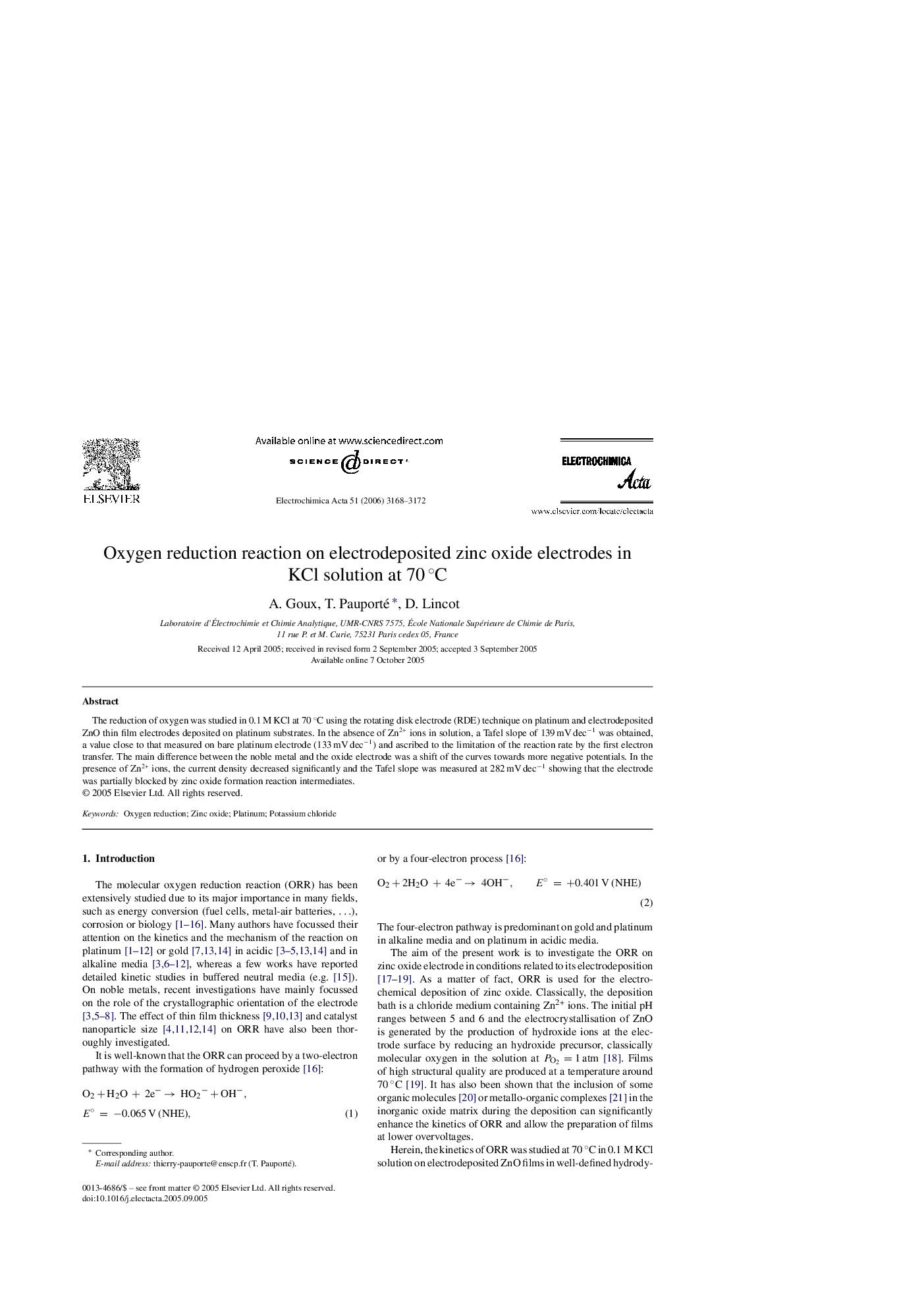| Article ID | Journal | Published Year | Pages | File Type |
|---|---|---|---|---|
| 196668 | Electrochimica Acta | 2006 | 5 Pages |
The reduction of oxygen was studied in 0.1 M KCl at 70 °C using the rotating disk electrode (RDE) technique on platinum and electrodeposited ZnO thin film electrodes deposited on platinum substrates. In the absence of Zn2+ ions in solution, a Tafel slope of 139 mV dec−1 was obtained, a value close to that measured on bare platinum electrode (133 mV dec−1) and ascribed to the limitation of the reaction rate by the first electron transfer. The main difference between the noble metal and the oxide electrode was a shift of the curves towards more negative potentials. In the presence of Zn2+ ions, the current density decreased significantly and the Tafel slope was measured at 282 mV dec−1 showing that the electrode was partially blocked by zinc oxide formation reaction intermediates.
